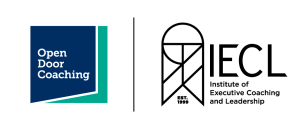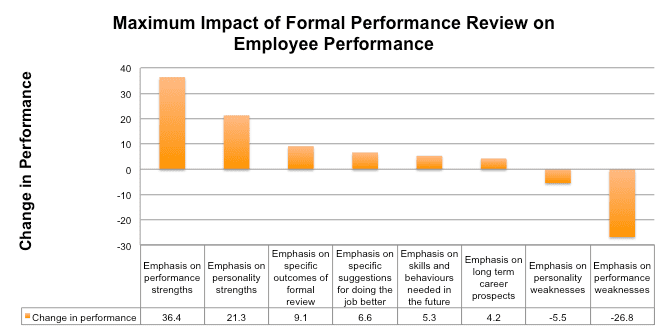Shifting Under Performance – Part 1
Whenever I am delivering a coaching workshop and talking about coaching to enable engagement, accountability, responsibility and high performance, our conversations are often naturally diverted by someone who says…
‘It’s all very well you talking about coaching people to high performance…and I get that…BUT what about those people who…’
And then the group starts with a long line of challenges, worries, concerns and shear frustrated stories about ‘under performers’.
Those people who…
…just don’t care
…are only here for the money and have made that very clear
…they just say ‘I don’t know’ when you ask them ‘what are your goals?’
…say that they are going to deliver, and then don’t
…have been moved from department to department because of under performance and now they are my problem
…you’ve tried everything with
And normally the long list finishes with ‘they take up all your time and energy, I’ve tried everything but nothing seems to work, so the only option is put them on a performance management plan’.
So in response to the question ‘what do you do?’, firstly, I want you to know that I understand and I acknowledge your efforts.
The participants in our workshops are genuinely seeking answers; they genuinely want to bring out the best in the people that they work with; they are keen to give the coaching approach a go and they can seriously do without the stress, numerous meetings, paperwork and documentation that is involved in a formal performance management process.
So this blog is the first one in our series on the topic and I hope that they really make a difference to you and to the person you are coaching to shift performance.
The purpose of this blog is not to solve all the problems that you might be experiencing – it is to open up new conversations and new ideas.
And there are two concepts that I want to offer you in our first blog around:
(1) changing our wording and focus and (2) coaching to strengths to shift performance.
Changing our wording
See what I did there?
I dropped the word ‘UNDER’. And I used the word COACHING (no surprise there of course). That’s the first step I believe. To take a coaching approach to performance is to think about ‘what we want to achieve?’ and ‘where we want to go’. So it’s not about talking about under performance – that’s not what we want to achieve. It’s talking about a shift in performance – from where we are now, to where we want to be.
I offer that managers to re-start the conversations around performance with the following little script…
I want to partner with you (or you could say work with you), to assist you to shift your performance, to where you need it to be, to be high performing in your role.
It might sound a little clunky, so feel free to massage the words. But the emphasis is on YOU – I’m partnering with YOU. It’s YOUR performance and YOUR role. So now we are shifting the responsibility – from the manager taking all the responsibility to tell and direct and write the performance plans and goals to the staff member sharing the responsibility and us working together.
Change the focus
The other impact that this wording has is to refocus your mindset on what you, as the manager, are trying to achieve. Like noticing red cars on the road – all of a sudden you see many of them. If you focus on ‘under performance’ that’s what you are going to notice. If you focus on ‘shifting performance’ it works the same way.
Try to focus on what the person is doing and what you want to see more of.
For example try saying something along the lines of:
I see that you have started to … and I’d like you to continue to do more of that. How can you bring more of that into your day? How can you focus your time around more of that?
Focus on strengths – not weaknesses
The second idea is to focus on the person’s strengths – not their weaknesses. To reset and re-open this conversation, the little script goes like this…
I want to partner with you to focus on your strengths and how you can use those strengths to shift your performance to achieve what you need to in your role.
So now our conversation turns to coaching questions that we ask the staff member:
‘What do you think are your strengths?’
‘What most energises you in your work (or outside your work)?’
and
‘How can you bring more of that to your role to achieve what you need to achieve?’
Now if they say ‘nothing at work energises me…I’m just energised by my family…’ or something like that…just simply respond with ‘what is it that most energises you about your family?’ and ask more questions to dig deeper.
One of my executive coaching assignments was to assist a Chief Scientist to build relationships with key stakeholders who were responsible for research budget allocation. He referred to the stakeholders as ‘morons’ because they didn’t understand the research and they were (in his words) ‘seemingly persuaded by the most illogical diatribe’.
What are you thinking about this? Yes, first step in the coaching…let’s stop referring to them as morons!
Leverage the strengths to shift the performance
Second step, identify my Chief Scientists strengths and then think about how we can leverage those strengths into the area of building relationships.
So what are his strengths? He loves data, research, solving problems and has dedicated his life to the pursuit of knowledge that will make a difference to the world.
So what if he did just that…did a research project, collected some data, pursued knowledge that would make a difference to the world – but this time the data he is collecting is about the people who he needs to influence.
To this idea he simply responded ‘I can do that!’ We had a great conversation and a lot of laughs and at the end of our time he was enthusiastic to undertake the project.
We are leveraging his strengths to help him shift performance into the area that needs development and to help him achieve what he needs to achieve – building relationships and get funding.
Have another go but do it slightly differently this time!
If you doubt whether this approach could really work, then I simply encourage you to give it ago, or give it ANOTHER go, because you’ve got nothing to loose and everything to gain. But don’t just do the same thing again. Think about what we’ve written above and try something different.
We have heard so many wonderful stories from managers who have tried this technique and have a lot of coaching successes.
The difference it makes to the individuals, to the teams and to overall performance can be measured on a personal level and on a performance level.
Need some more evidence?
After that if you are still in doubt, take a look at the above graph from the Corporate Leadership Council where they found performance conversations that are focused on telling, directing, making suggestions and only focused on weaknesses will not bring us the change that we are looking for.
Performance conversations that are focused on ‘performance strengths’ found a 36.4% uplift in performance as a result of the conversation.
I acknowledge that it is a challenge and that you have tried a lot of things. At the same time, I believe in you and your abilities to make a difference. And if you take that mind set into your conversations, then I am confident things will change – we don’t know exactly how…but they will change.
Enjoy your coaching!




